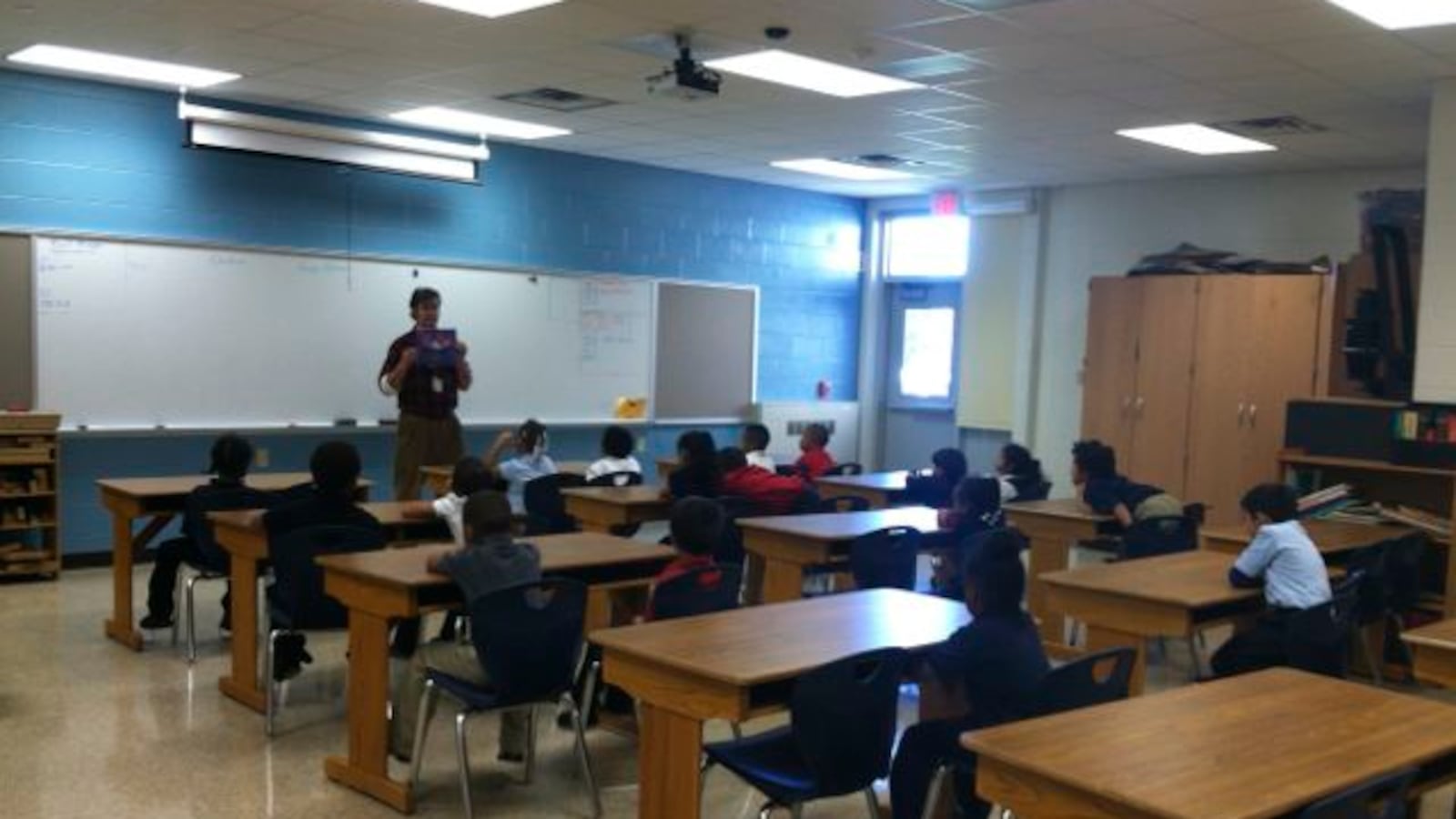The Indiana State Board of Education today held off a decision to ask school districts to count test scores and other “objective” measures of teaching as bigger factors in annual teacher ratings.
Board member Gordon Hendry said the board wants to talk with legislators and get public feedback before determining how to guide schools to help them determine what counts as “objective measures” of teaching quality how to meet the standard in state law that requires test results and other measures to “significantly inform” a teacher’s rating.
“The board will not be setting specific numbers today at the meeting,” Hendry said.
A large crowd, including several educators, came to the meeting expecting a vote on a proposal to set minimum and maximum percentages for how much teacher ratings should be driven primarily by student test score gains. The guidelines would have encouraged schools to count test scores for as much as half of the teacher’s rating score.
The board approved other recommendations for teacher evaluation by a 7-4 vote, with state Superintendent Glenda Ritz and board members Cari Whicker, Troy Albert and Andrea Neal voting no. The dissenting board members said they opposed to changes because new tests and new accountability systems in the works right now make it difficult to change how teachers are evaluated. Whicker and Neal are classroom teachers, and Albert is a principal.
“For me it’s just a premature vote,” Neal said. “The assessment situation is just so up in the air, and until that situation resolves itself, I am uncomfortable moving a new teacher evaluation system forward.”
But Hendry said changes must be made sooner.
“The vast majority of educators currently say they are dissatisfied with the system,” he said.
A 2011 law that overhauled teacher evaluation in Indiana left decisions about how to count student test scores in a teacher’s rating up to local school districts. That law required student test score growth to “significantly inform” a teacher’s evaluation score, which was interpreted very differently by different school districts.
“The downside of local control is that what ends up happening is that there is a high degree of variability across the state,” said Jessica Conlon of The New Teacher Project. “Some districts weigh objective measures as low as 5 percent and others as high as 50 percent.”
A list of recommended changes to teacher evaluation processes was brought to the board by a consultant, New York-based The New Teacher Project, resulted from feedback the state got from the U.S. Department of Education as part of a waiver that releases Indiana from some of the sanctions of the federal No Child Left Behind law.
The consultant proposed increased training and communication among teachers and administrators along with suggesting schools count in more tests. But even giving guidance on what percentage of a teacher’s rating should be based on tests could require a change in state law.
Under the original recommendations, districts could break teachers’ evaluations into two big categories: one-half to two-thirds of the rating would be based on observations of their teaching, while the remaining one-half to one-third would be based mostly on student gains on state tests.
If a teacher is in a subject that is not part of the state testing system, then other sorts of test and objective measures such as portfolios of student work could count for as much as 40 percent of their ratings, under the recommendations. School districts would still determine their percentages within those ranges.
Indiana teachers this year saw predominantly positive ratings — more than 97 percent of the state’s teachers who were rated were deemed “highly effective” or “effective,” the top two of four categories. Hardly any were rated “ineffective.”
Daniel Brugioni, a high school English teacher in Lake Ridge schools near Gary, said putting too much emphasis on student test scores misses much of the improvement struggling students make throughout a school year. Brugioni said his supervisors consided the 51 percent of his students that passed the English end-of-course exam last year a “dismal failure,” but 110 of his 129 students began high school reading below a ninth-grade level.
“In any other parameter or any other statistical group, that would be a miracle, and I would be lauded,” Brugioni said.
Teaching cannot be judged primarily on numbers and statistics, said Ryan Russell, assistant superintendent in Warren Township. Poverty and other factors outside of school can affect how children perform on tests, he said. It’s not fair that teachers in high-poverty schools risk lower ratings because their students tend not to score as well on tests.
“Do we really believe — if we move highly effective teachers from a middle class district to a high-poverty one — do we really think the students would perform better?” Russell said. “If we do, let’s just set up a teacher exchange program and that will solve all our problems.”
Whicker said it’s not realistic to believe schools can use objective measures other than state test scores, such as portfolios.
“To grade 120 portfolios for my students across the state is not really realistic,” she said. “Well, we’re back to the ISTEP test, so that’s what practical. So we can talk about objective measures even just to talk about them, but the truth is that’s not the reality. That’s just less time for me to teach.”

